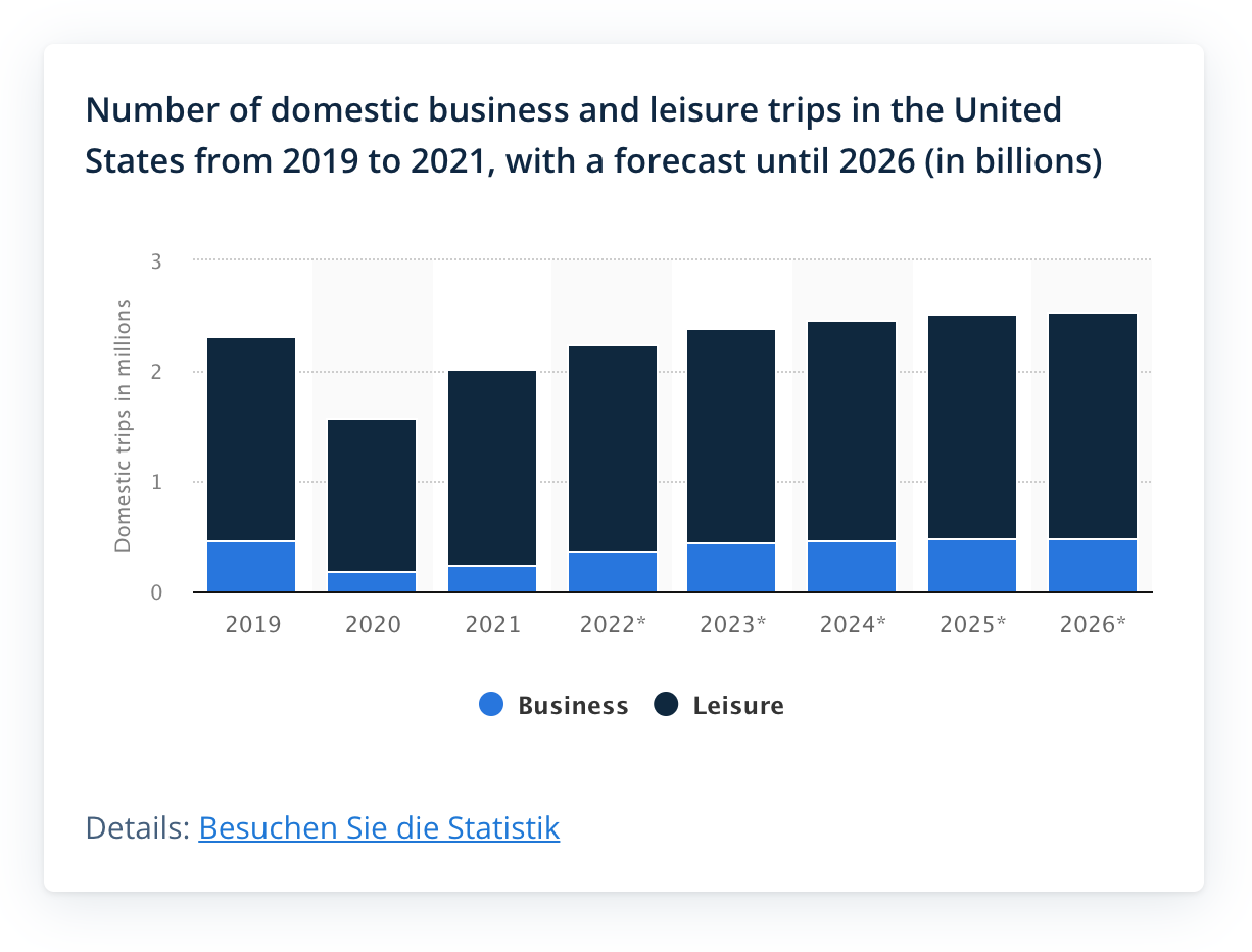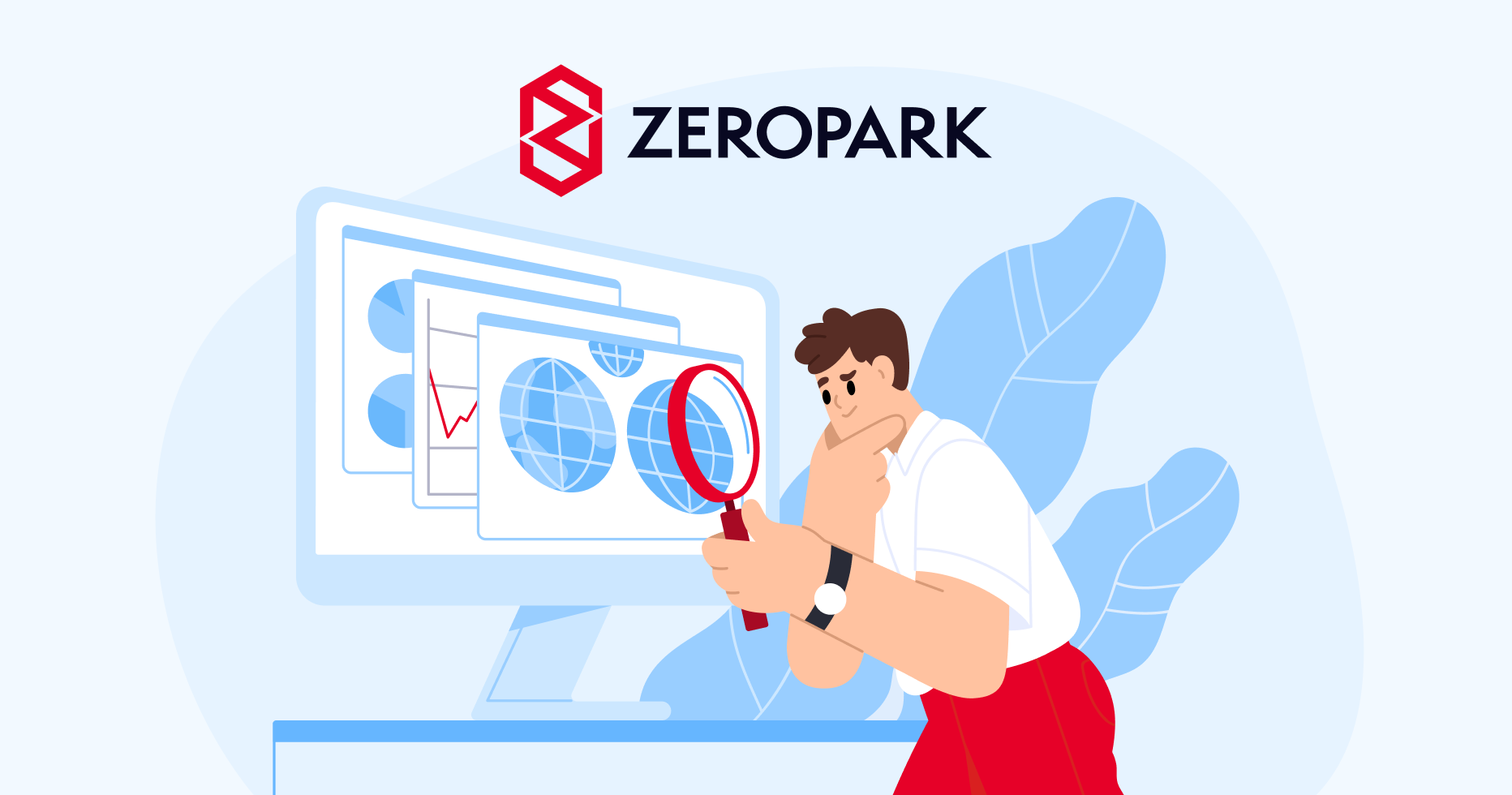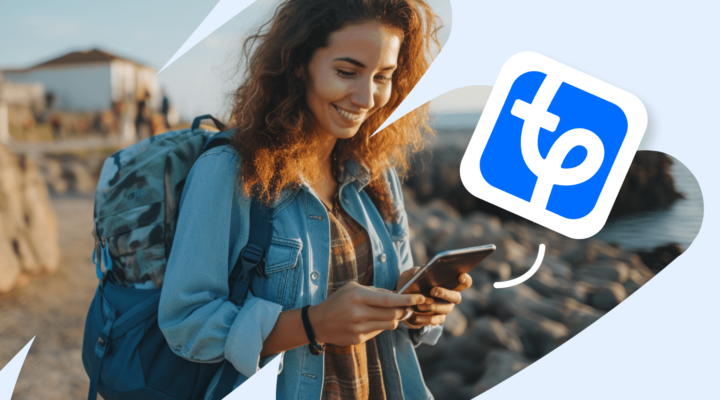The Changing User Preferences
For the travel industry, this should not be a novelty, but a well-trained marketer always follows the trends and targets the audience’s preferences. The times of freestyling in advertising are long gone, and it is of the utmost priority that we all understand the expectations of our potential customer base.
It is essential to get to know preferred destinations, rental and accommodation variants, and general trends in travel. Should you be targeting more adventurous, or sports-oriented audiences, make sure to adjust the offer and language. 2022 was a great year for the travel industry, despite the prices growing due to a global situation. People have started to travel more, and spend more – this trend is only expected to scale up in 2025.
E-Commerce and Travel Purchases in 2025
Although the pandemic has had a major impact on all spheres of consumer and business life, e-commerce has grown exponentially even during times of uncertainty. Global e-commerce spend is estimated to grow almost to 7 billion dollars in 2024, compared to 5.7 billion dollars in 2022.

The same applies to travel purchases, and although stay-at-home vacations are here to stay, domestic leisure traveling is estimated to double by 2033. Business travel numbers, on the other hand, will supposedly grow by 48% – and that is some great news for marketers working in the travel business.

Increased demand for travel means one thing for you – if you can find these audiences more efficiently, you’ll be able to boost the return of ad spend, the number of conversions, and average order value.
Starting Points of the Modern Shopping Journey
One of the most interesting and vital concepts of shopping online is the structure of consumer behavior. Modern shopper, whom we want to find at the moment of the highest purchase intent, has visibly drifted away from major search engines to fulfill their needs.
Customers rarely use general search engines to type in their specific queries. Instead, they turn to vertical, more specialized placements that answer their needs directly. Example? Instead of trying to find accommodation in mainstream SERPs, you’d turn to Booking.com, AirBnb, or Kayak right away. In fact, three out of ten online shoppers use leading marketplaces to make travel bookings.
Following the Context
Our no. 1 advice for every travel-oriented marketer is that you should always find your audiences at the right place and time. The modern user is more than ever aware of their online privacy, and your offer will be most welcome should it be non-intrusive, and actually answer their needs.
For exactly that reason, you should always find incremental placements for your offers. Targeting your audiences by the context provided by the query keywords should be the foundation of your advertising portfolio. In that way, you’ll be reaching customers who are already looking for the opportunity to spend – they just need a precise suggestion where to do so.
Messy Middle of Travel Customer Shopping Journey
The concept of messy middle explains perfectly how you need to approach the modern shopper. In the 2020s the purchase journey is no longer uninterrupted and straightforward from intent to purchase. Currently, the customer journey is winding, and consists of many touchpoints – all of these serve a different purpose: nurturing, discovering, consideration or advocacy.
Finding a way to become present in all of the stages of a user’s decision-making process is your key to winning their trust, nurturing them, and conveying your brand message.
How to Communicate With Purchase-Ready Travelers?
2025 travel audiences expect you to be ready with your offer whenever they are looking for it. Therefore, there’s no need to be too inspiring, noisy, and intrusive, as this is exactly the opposite of what is desired. What you can do instead is search for subtle and relevant placements, where your brand can be proposed to the shopper.
This circles back to how following the audience’s intent becomes a pivotal point of your modern marketing endeavors. Actively navigating through the most relevant audiences brings the most impressive results in programmatic advertising and lets you quickly trace preferences.
Incremental Acquisition Channels of Travel Audiences
Now that we’ve covered why it’s crucial for you to put incrementality and contextuality on top of your priorities list, let’s run through the types of incremental placements to keep your eye on. These not only prove to drive great ROAS but also provide the highest extent of brand safety.
1. Vertical Search Engines
If you want to supply your revenue with additional channels of customer acquisition, investing in solutions that offer advertising opportunities in vertical search engine placements, is an excellent option in 2025.
Brand suggestions in vertical search engines are not only great for the travel industry, but they’re also becoming a global trend for almost every niche in online marketing, m-commerce, and e-commerce. With various incremental search placement formats, advertisers and media buyers are able to boost their visibility for example with an autocomplete feature, or by accessing keyword-based product deeplinks.
This way your audience does not need convincing to complete the purchase – whether it’s accommodation, transportation, or the whole package. Your placement reaches them as a suggestion of exactly what their intent is, without having to compete with the biggest market players in typical SERPs.
2. Apps and Extensions
Apps and extensions are part of the discovery part of the modern customer journey. They allow customers to browse through the offers. And the best part is that you can be sure that the audiences gathered there have consciously entered in search of the best travel opportunities. Therefore, should you offer these to them, you’ll be highly appreciated.
3. Coupons and Discounts
With costs of travel rising year-on-year, it’s become really common for customers to search for discounts or promo codes. Especially with independent, low-cost, experience-filled traveling becoming a trend again.
Gaining visibility on these kinds of software and websites shortens the purchase path, as again, you are directly reaching people already making an effort to fill their shopping cart and plan a trip. So, should your proposal become the perfect match, you can expect high conversion rates. Given the rise, as mentioned above, in general prices of travel, the AOV should be impressive as well.
4. Native Advertising
The key to your audience’s hearts is to resonate with their intent right when they need it. Therefore, there is rarely any more efficient method to do so other than native content. With your content embedding, all influencers, bloggers and brands are able not only to convey their message but also use the links to enrich the content.
The more informative value in the content itself and the more answers it provides, the more effective your campaigns will be. Especially in 2025, when demographic targeting and third-party data usage are not in-favor anymore, what better way to reach the most relevant of audiences than by the keywords they type in? This aligns greatly with the values promoted by Google itself with Helpful Content updates putting increased pressure on the usability of the websites.
Tip! Try to embed your links in the placements that hold the most informative value, so that they are organically perceived as a content improvement. This way your audiences will treat your recommendations as top-of-the-game expert opinions, and the crawlers will index it much more favorably, enhancing your organic reach.
5. Social Media
Just like the travel-related blogosphere, social media influencers have become important figures in the online sphere of travel-related discussion. Getting in touch with the most trusted personas can give you a platform to spread the message to the most relevant audiences. Links to branded offers can be placed in stories, posts, bios, or descriptions – depending on your preferences.
Besides the undeniable contextuality of the model, this model benefits heavily from opinion leadership. A recent study suggests that 49% of people are interested in a product more after hearing influencer recommendations. It all revolves around the concept of social proof and the position achieved by the influencer.
With the monetization of online reach being troublesome for many influencers, you can become an incremental source of income for them while boosting your campaign efficiency at the same time. When using programmatic solutions for influencer marketing, you can also rest assured about compliance and quality of audiences, as top-quality solutions provide that in-house.
No matter what quality and brand-safe product or service you want to promote, your friendly travel influencers will be happy to promote it, as long as it’s thematically relevant.
6. Word-Of-Mouth
Word-of-mouth marketing is the most uncontrollable and viral one. And it happens without your actions. It’s simply based on the power of recommendations, and although in theory, it works just like influencer marketing, nothing about it is programmatic and happens on a much smaller scale.
But you should never forget about the power of word-of-mouth. And the best way of nurturing it is to have stable and quality services in your offer.
7. Sales-Facilitation Services
Rising prices, bank loans, inflation. We’re living in a world that just does not spoil spenders. Yet, we are all increasing our online shopping. Therefore, financial instability brings impressive growth to the fintech industry, as sales facilitation services become highly in demand.
With services that allow customers to delay their payments and spread them in time interest-free, customers’ life becomes easier and easier. BNPL services have been continuously winning shoppers’ hearts, offering them the best deals in intuitive placements – and what is even more important – smartly answering the queries.
By supplying your blogging efforts with paid audiences provided by performance marketing solutions, you can gain access to the users of BNPL apps.
Your offers can become part of that smart ecosystem where your campaign wins placement as a search autocomplete or in-app suggestion tile. As Ascent’s study found out, more than 55% of US-based consumers have already tried shopping with BNPLs with more than 45 million users doing so in 2022 alone, quadrupling the numbers from before the pandemic. These millions of customers are more than happy to see your proposal.
Let’s look at Klarna, the leading Buy Now Pay Later solution for consumers. Only in 2021, their merchandise volumes skyrocketed from $53 billion to $80 billion, according to Klarna’s official financial report. And instead of slowing down after lockdowns, as was anticipated by some experts, the market segment kept its trajectory, performing better and better – which should be reflected in 2025 as well.
What we see is a three-way synergy that helps customers complete more favorable purchases, enriches the offer of the BNPL platform, and drives more shoppers to your website. Agglomerating users who already looking for a chance to spend becomes your chance to outdo the competitors without competing in mainstream SERPs, and shortening the path from idea to purchase.
Tip! Not that long ago, Booking.com introduced its own solutions to facilitate payments for travelers. Bear this approach, and current user preferences, in mind, when preparing your offer to maximize the message efficiency.
Conclusions
2025 is undoubtedly going to be a great year for travelers. The only thing that could stop it is, literally, a catastrophe. But in order to predict and approach this adventurous customer base, a marketer needs to understand its preferences. Fortunately, we know exactly where and how to gain visibility in order to maximize ROAS.
See how Zeropark solutions help reach new, motivated shoppers.





